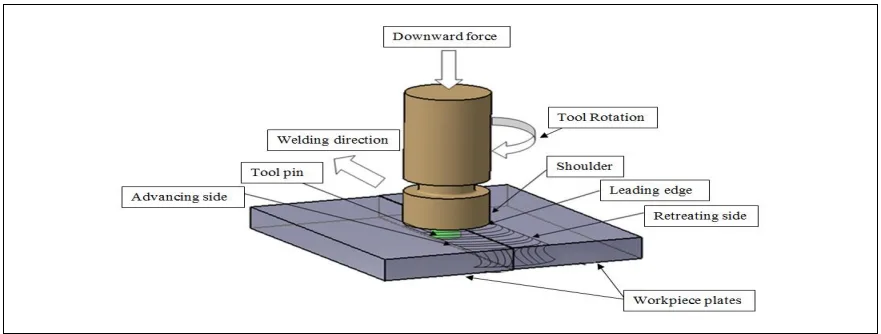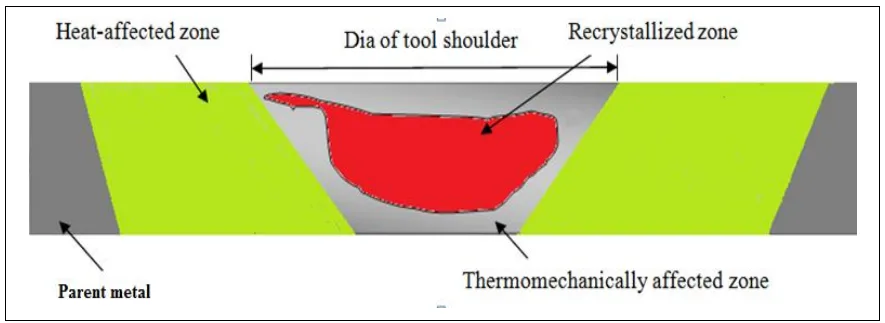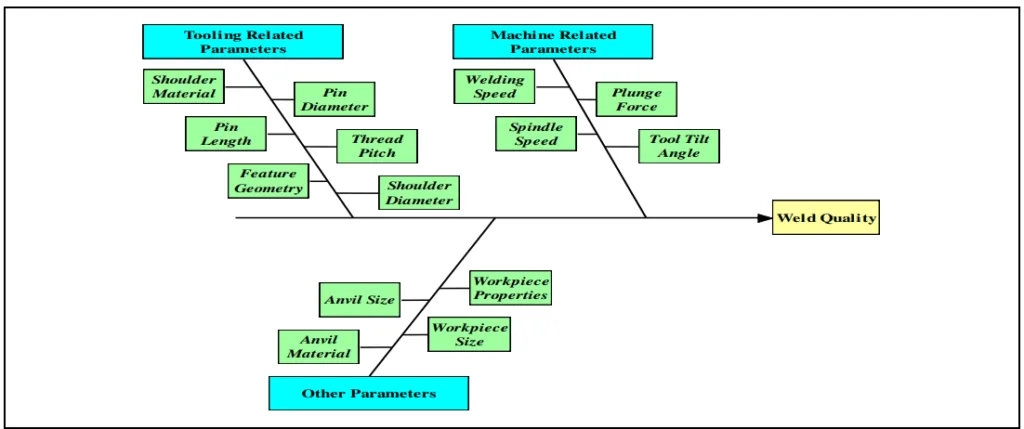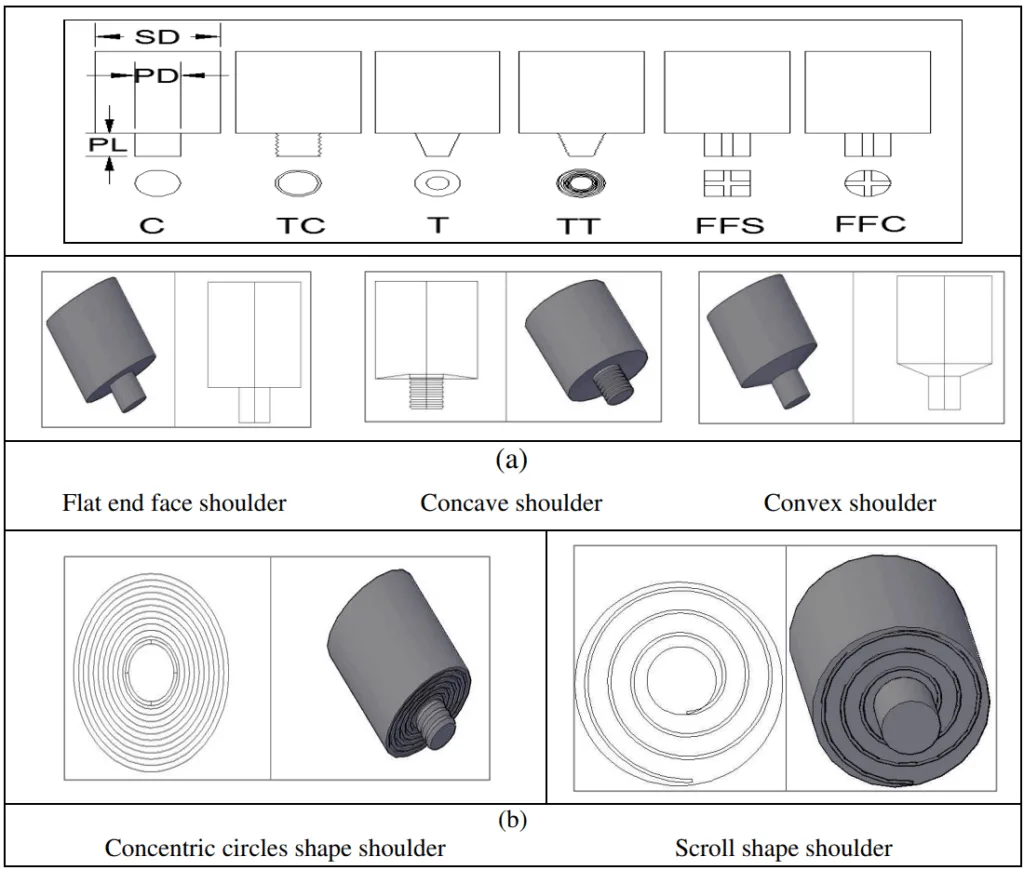This introduction paper is based on the paper "A Critical Review of Friction Stir Welding Process" published by "DAAAM International Scientific Book 2015".

1. Overview:
- Title: A Critical Review of Friction Stir Welding Process
- Author: Verma, S. M. & Misra, J.P.
- Year of publication: 2015
- Journal/academic society of publication: DAAAM International Scientific Book 2015
- Keywords: Solid-state welding, friction stir welding, preheating, quenching, nano-particle inclusion
2. Abstract:
Friction stir welding (FSW) is a permanent type solid state joining process which is increasing rapidly for joining different metal alloys and non-metals in manufacturing industries especially aerospace, marine, spacecraft, automotive, etc. In present scenario the welding of metal alloys are replaced by FSW owing to its unique features over fusion welding processes, i.e. reduced porosity defect, reduced heat affected zone (HAZ), no requirement of shielding gas, ecofriendly, reduced distortion, etc. In this chapter, a critical evaluation of critical aspects of friction stir welding namely process principle, metallurgical and mechanical aspects; effect of preheating and nano-particle inclusion have been discussed. Difficulties and other issues related to FSW are also addressed to provide a guideline to global research community to carry out extensive research in this field.
3. Introduction:
The welding industry has evolved significantly since the 19th century, with fusion welding techniques being predominant initially. However, fusion welding presents challenges including high heat affected zones, solidification defects, and poor mechanical properties. The development of solid-state welding techniques, particularly friction stir welding (FSW), was necessitated by the limitations of traditional fusion welding methods, especially for reactive elements such as aluminium and magnesium. FSW was invented by Wayne Thomas and his colleagues at The Welding Institute (TWI) in 1991, producing joints that are 90% defect free without melting the workpiece. The technique has proven to increase joint strength by 30% to 50% in spacecraft manufacturing while reducing manufacturing time from 23 days to 6 days, establishing FSW as a green technology.
4. Summary of the study:
Background of the research topic:
Traditional fusion welding techniques suffer from limitations including wide heat affected zones, solidification defects, distortion, and reduced mechanical properties. These issues are particularly pronounced when welding reactive elements like aluminium and magnesium alloys, which are increasingly used in aerospace, marine, and automotive industries due to their high strength-to-weight ratio.
Status of previous research:
The paper reviews extensive research conducted on FSW across different materials, with 76% of research focused on aluminium alloys, 15% on steel, 6% on magnesium, and 3% on copper. Research has covered various aspects including tool geometry effects, process parameters optimization, microstructural analysis, and mechanical properties evaluation across different alloy systems.
Purpose of the study:
The study aims to provide a comprehensive critical review of friction stir welding process, covering process principles, metallurgical and mechanical aspects, effects of preheating and nano-particle inclusion, and to identify gaps in current research to guide future investigations in this field.
Core study:
The paper systematically reviews FSW research across different material categories including aluminium alloys, steel, copper, magnesium, and dissimilar metals, analyzing process parameters, tool geometry effects, microstructural evolution, and mechanical properties.
5. Research Methodology
Research Design:
The study employs a comprehensive literature review methodology, systematically analyzing published research work on FSW from its inception in 1991 to 2015.
Data Collection and Analysis Methods:
The authors collected and analyzed research papers from various journals and conferences, categorizing them by material type, process parameters, and research focus areas. A comparative analysis was conducted as illustrated in "Fig. 5.Comparative study of published research work on FSW".
Research Topics and Scope:
The review covers FSW applications across multiple materials including aluminium alloys (2xxx, 5xxx, 6xxx, 7xxx, 8xxx series), steel, copper, magnesium, titanium, plastics, and dissimilar metal combinations, along with advanced topics like nano-particle inclusion and preheating effects.
6. Key Results:
Key Results:
The review identifies that FSW produces superior mechanical properties compared to fusion welding, with joints exhibiting enhanced tensile strength, ductility, fatigue, and fracture toughness. The process parameters including tool rotation rate, traverse speed, and spindle tilt angle significantly influence joint quality. Tool geometry, particularly pin and shoulder design, plays a crucial role in material flow and heat generation. The paper also highlights the potential of preheating and nano-particle inclusion to further enhance joint properties.
Figure Name List:




- Fig. 1. Principle of friction stir welding (Backer and Bolmsjo, 2014)
- Fig. 2. Microstructural regions of friction stir welding (Mahoney et al., 1998)
- Fig. 3. Cause and effect diagram for friction stir welding process
- Fig. 4. (a) FSW tool with different pin geometry (C: Cylindrical; TC: Threaded cylindrical; T: Tapered; TT: Threaded taper; FFS: Four flute square; FFC: Four flute cylindrical)(b) FSW tools with different shoulder geometry
- Fig. 5.Comparative study of published research work on FSW
7. Conclusion:
FSW emerges as a superior alternative to fusion welding due to its unique characteristics including low distortion, absence of arc and filler metal requirements, reduced HAZ, and freedom from spatter and porosity defects. The process is suitable for joining similar or dissimilar metals including aluminium, magnesium, copper, steel, zinc, nickel alloys, and plastics. However, several areas require further research including FSW of composite materials, detailed study of process parameter interactions, tribological behavior analysis, and development of mathematical models for process optimization.
8. References:
[The paper contains 89 references listed alphabetically from Al-jarrah et al. (2014) to Zhou et al. (2015), covering comprehensive research in FSW from various international journals and conferences]
9. Copyright:
- This material is a paper by "Verma, S. M. & Misra, J.P.". Based on "A Critical Review of Friction Stir Welding Process".
- Source of the paper: DOI: 10.2507/daaam.scibook.2015.22 This material is summarized based on the above paper, and unauthorized use for commercial purposes is prohibited. Copyright © 2025 CASTMAN. All rights reserved.
Paper Summarize:
This comprehensive review paper examines friction stir welding (FSW) as an innovative solid-state joining technique that addresses the limitations of traditional fusion welding methods. The authors systematically analyze research developments from 1991 to 2015, covering process principles, material applications, and technological advancements. The paper demonstrates that FSW offers significant advantages including reduced defects, improved mechanical properties, and environmental benefits, while identifying key research gaps requiring future investigation.
Key questions and answers about the research:
Q1. What are the main advantages of friction stir welding over traditional fusion welding processes?
A1. According to "A Critical Review of Friction Stir Welding Process", FSW offers unique characteristics including reduced porosity defect, reduced heat affected zone (HAZ), no requirement of shielding gas, ecofriendly nature, and reduced distortion compared to fusion welding processes.
Q2. Which materials have been most extensively researched in FSW applications?
A2. Based on "Fig. 5.Comparative study of published research work on FSW" from the paper, 76% of research work has been concentrated on aluminium owing to its industrial applications and difficulties experienced during fusion welding, followed by 15% on steel, 6% on magnesium, and 3% on copper.
Q3. What are the key microstructural regions formed during FSW?
A3. As illustrated in "Fig. 2. Microstructural regions of friction stir welding (Mahoney et al., 1998)", FSW joints contain four distinct regions: parent metal (unaffected), heat-affected zone (HAZ), thermo-mechanically affected zone (TMAZ), and nugget zone or stir zone (fully recrystallized zone).
Q4. How does tool geometry influence FSW process performance?
A4. According to the research methodology section of "A Critical Review of Friction Stir Welding Process", FSW tool geometry, particularly pin and shoulder design as shown in "Fig. 4", regulates the amount of material stirred and frictional heat generation, making it a deciding factor for obtaining sound welds.
Q5. What role does preheating play in enhancing FSW joint quality?
A5. The paper states in section 3.6 that preheating softens materials and increases material flow in the stir zone, reducing welding forces and enhancing efficiency, with FSW joints showing 8% strength increase compared to conventional FSW, while also reducing tool wear and extending tool life.
Q6. What are the main research gaps identified for future FSW investigations?
A6. The conclusion section of "A Critical Review of Friction Stir Welding Process" identifies several areas needing attention: limited research on alloys, plastics, and composite materials; insufficient study of process parameter interactions; inadequate understanding of material flow mechanisms and tool design; and lack of mathematical models for process optimization.